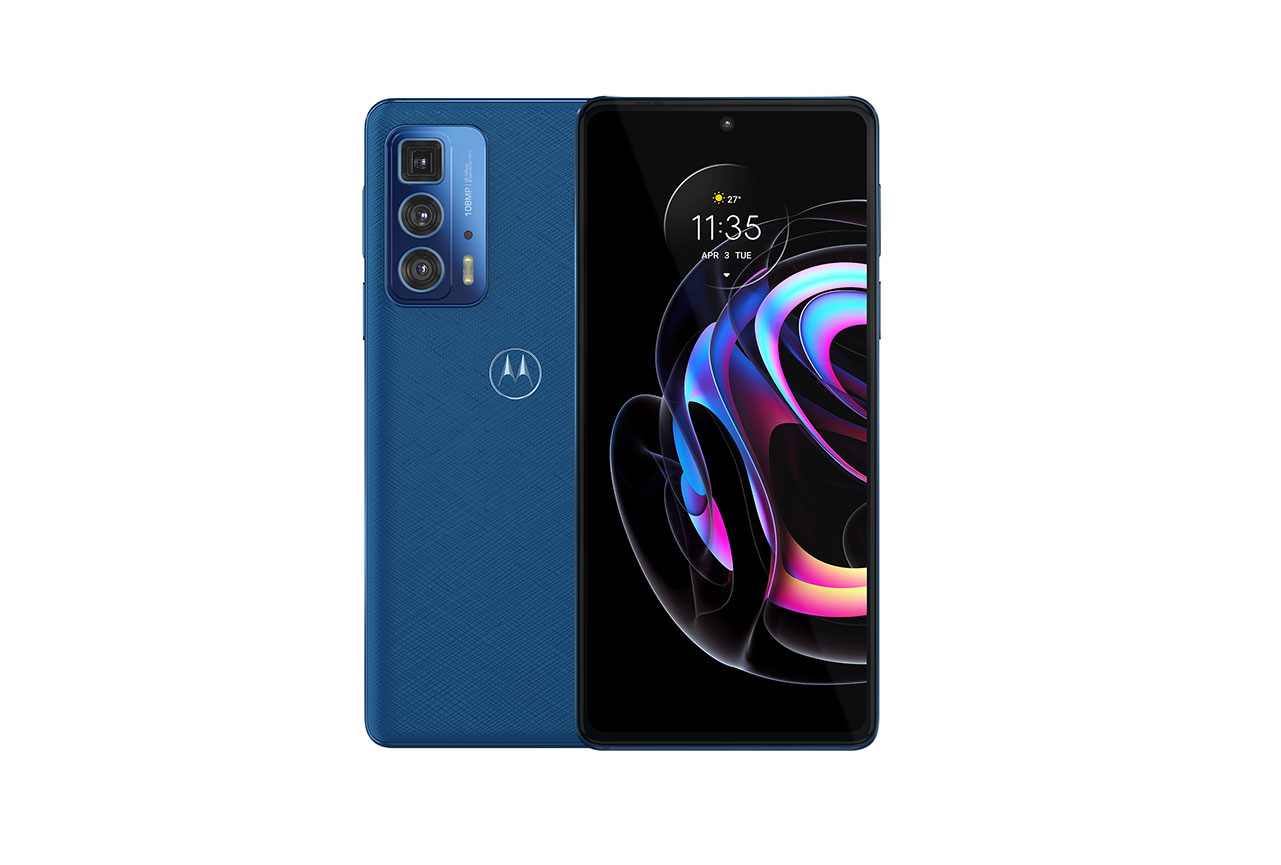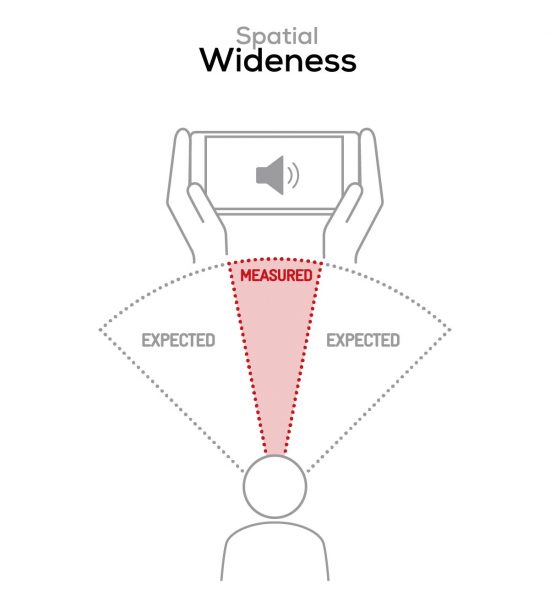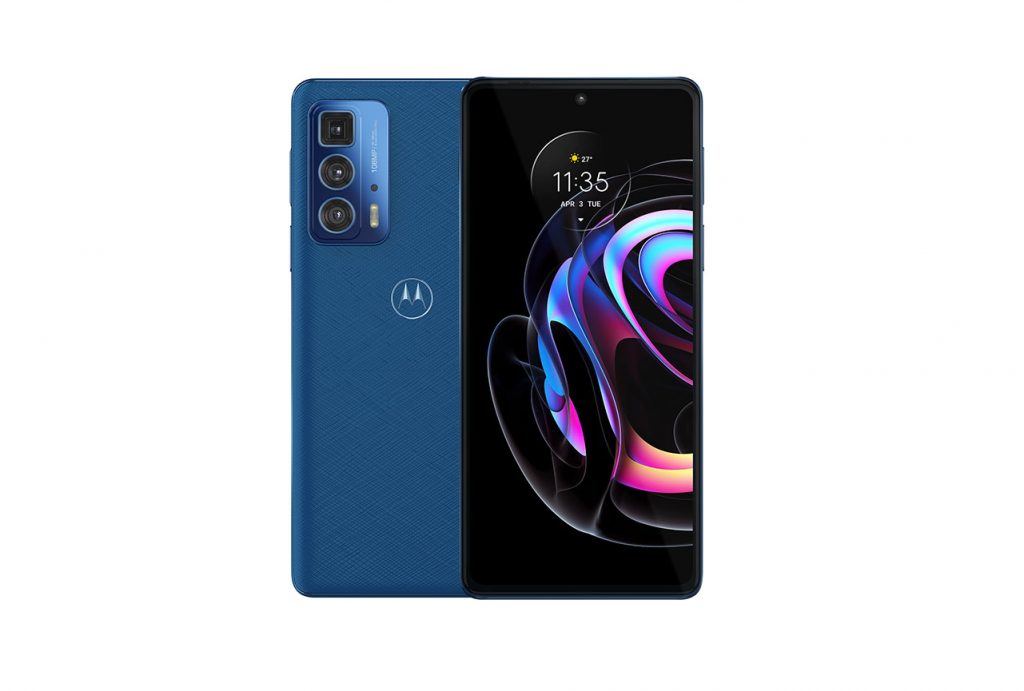The 20 Edge Pro sits at the top-of-the-line smartphone in Motorola’s 2021 line of flagship phones, which jumped straight up from the first, super-curved-edge screen generation to the flat screen 20 series. The brand new 20 Pro features the Qualcomm Snapdragon 870 chipset, a 6.7-inch, 144Hz OLED display, HDR10+ certification, a periscope camera, and the capability to display a billion colors. In terms of audio, Motorola’s flagship phone is equipped with a single speaker tuned by Waves Maxx Audio Mobile for playback, and three microphones for recording.
Key audio specifications include:
- One bottom-firing speaker
- Three microphones
- No 3.5mm headphone jack
About DXOMARK Audio tests: For scoring and analysis in our smartphone audio reviews, DXOMARK engineers perform a variety of objective tests and undertake more than 20 hours of perceptual evaluation under controlled lab conditions. This article highlights the most important results of our testing. Note that we evaluate both Playback and Recording using only the device’s built-in hardware and default apps.
(For more details about our Playback protocol, click here; for more details about our Recording protocol, click here.)
Test summary
Scoring
Sub-scores and attributes included in the calculations of the global score.

Motorola Edge 20 Pro


 185th
185th 53rd
53rdPlayback
Cons
- Playback is mono, which heavily impairs almost all spatial attributes.
- The tonal balance is impaired by a strong lack of bass and low-end extension.
Recording
Pros
- Precise and present voices thanks to a bright tonal balance
- Good localizability and great wideness, even in portrait mode
- The noise reduction is very efficient in life and selfie videos, allowing a good user experience in loud environments by isolating voices from unwanted background.
Cons
- Canny sound, lack of bass and warmth
- In memos and meeting recordings, recorded contents are heavily impaired by the noise reduction algorithm tuning, making the device barely usable.
- The voice recorder app cuts high-frequencies (above 8 kHz).
- Unsuited for recording in loud environments
With a global Audio score of 55, the Motorola Edge 20 Pro lands in the bottom of the DXOMARK database, alongside devices such as the Black Shark 3 Pro and the Xiaomi Mi CC9 Pro Premium Edition, and curiously enough, a long way from the Motorola Edge+ (66) which precedes the Edge 20 Pro.
Playback tests revealed that the Edge 20 Pro isn’t really suited for either listening to music, watching movies, or playing games. This is mainly due to its strong lack of bass (and low-end extension, altogether) and to its single-speaker design, resulting in a mono sound reproduction. However, it is capable of delivering clear treble and sharp attack across all use cases and volumes.
In recording, while the Motorola Edge 20 Pro certainly ensures decent audio quality to selfie videos (fairly pleasant treble, faithful and natural dynamics and good wideness and localizability), we wouldn’t recommend it for any other use case because of an ill-adjusted noise-canceling algorithm, a severe lack of bass and warmth, and an overall canny sound. It is important to note that, as a recording device, the Edge 20 Pro is particularly unsuited for loud environments (such as concerts), memos, or meetings.
Sub-scores explained
The DXOMARK Audio overall score of 55 for the Motorola Edge 20 Pro is derived from its Playback and Recording scores and their respective sub-scores. In this section, we’ll take a closer look at these audio quality sub-scores and explain what they mean for the user.
Playback
Timbre tests measure how well a phone reproduces sound across the audible tonal range and take into account bass, midrange, treble, tonal balance, and volume dependency.
Although it isn’t as clear as with the Motorola Edge+, treble delivered by the Edge 20 Pro is very decent, earning the device a good timbre sub-score when it comes to playing classical music.
On the other hand, midrange lacks consistency; by not being present enough, low-mids deprive playback from their warmth, and voices sound nasal. But the speaker’s main weakness is its severe lack of bass and low-end extension, which makes all content sound flat and sort of washed out. As you can imagine, the phone is therefore quite unsuited for playing hip hop, electronic music, and most types of movies.

Dynamics
Motorola Edge 20 Pro
67
81
DXOMARK’s dynamics tests measure how well a device reproduces the energy level of a sound source, and how precisely it reproduces bass frequencies.
The Edge 20 Pro’s good dynamics performance earns it a solid 67. Thanks to a clear treble reproduction, the phone ensures precise attack for transient sounds, even for bass, otherwise (sustain and release) impaired by the limited low-end extension. Punch, albeit heavily impacted by the lack of low-mids and bass, manages to remain average. It should also be noted that dynamics are highly consistent, from softest to loudest volumes.



Spatial
Motorola Edge 20 Pro
32
88
The sub-attributes for perceptual spatial tests include localizability, balance, distance, and wideness.
Equipped with only one speaker, the Edge 20 Pro is severely disadvantaged in the spatial category: wideness is automatically nil, localizability of the sources within the sound field is very poor, and balance between the left and right channels is understandably skewed towards the bottom (in portrait mode) or the right side of the device (in landscape mode). The last attribute is saved by the generous amount of high-mids: distance rendering is fairly realistic, with voices correctly perceived at the screen’s position.


Volume tests measure both the overall loudness a device is able to reproduce and how smoothly volume increases and decreases based on user input.
The maximum volume delivered by the speaker could be louder — to be fair, the lack of bass also doesn’t help. Here are a few sound pressure levels (SPL) measured when playing our sample recordings of hip-hop and classical music at maximum volume:
| Hip-Hop | Classical | |
| Motorola Edge 20 Pro | 71.1 dBA | 69 dBA |
| Vivo X60 Pro 5G (Snapdragon) | 74.5 dBA | 70.9 dBA |
| Motorola Edge+ | 74.3 dBA | 68.5 dBA |
Minimum volume isn’t properly tuned, preventing dynamic contents such as classical music and movies to remain fully intelligible. Finally, as shown in the graph below, steps aren’t evenly distributed across the volume scale:
Artifacts tests measure how much source audio is distorted when played back through a device’s speakers. Distortion can occur both because of sound processing in the device and because of the quality of the speakers.
When playing games, the phone is particularly good at keeping sonic artifacts to a minimum: no noise, compression or distortion is observable, regardless of the volume.
When playing music, however, slight compression occurs at nominal and maximum volumes. Also note that synthetic signals (such as pure sine waves, mainly heard in electronic types of music, not acoustic) can trigger resonances and bass distortions.
Recording

Timbre
Motorola Edge 20 Pro
56
91
Overall, audio recorded with the Motorola Edge suffers from a strong lack of bass and from pumping triggered by loud low-frequency impactful sounds. Recordings made in loud environments exhibit quite an aggressive tonal balance, with a very canny sound, and phasing issues.
In selfie videos, treble is fairly pleasant. The same is not true for videos recorded with the rear cameras: treble then sounds very tinny, due to a limited high-end extension, and midrange, a bit canny — even nasal, when recording meetings. Finally, be aware that meeting recordings and memos are hamstrung by the voice recorder app’s settings, which cut all frequencies above 8 kHz.

Dynamics
Motorola Edge 20 Pro
63
81
Outdoor recordings benefit from a good noise-canceling algorithm, allowing voices to remain intelligibly decorrelated from the background. Selfie videos offer a correct, natural sound envelope rendition and an average signal-to-noise ratio.
On the other hand, dynamics in life videos are strongly impaired by phasing artifacts and a lack of precision in vocal plosives. Meeting recordings and memos, on their part, are heavily hindered by pumping and gating issues. What’s more, when multiple voices are recorded, the noise reduction algorithm cuts most of them off, making the device hardly usable.

Spatial
Motorola Edge 20 Pro
34
78
With a sub-score of 34, the Motorola Edge 20 Pro is second to last among all the phones we’ve tested to date in the Recording Spatial category. Despite really appreciable wideness across all use cases (even in portrait selfie videos) and realistic distance capture in videos, meeting recordings a exhibit very blurry image, critically impaired by the noise reduction algorithm.

Volume
Motorola Edge 20 Pro
55
99
The Edge 20 Pro’s volume performance as a recording device is also sub-par. Both nominal loudness and maximum reachable level without perceivable artifacts are low, in comparison to other devices. Audio does indeed suffer from pumping and phasing when recorded in a loud environment. Here are our test results, measured in LUFS (Loudness Unit Full Scale); as a reference, we expect loudness levels to be above -24 LUFS for recorded content:
| Meeting | Life Video | Selfie Video | Memo | |
| Motorola Edge 20 Pro | -36.9 LUFS | -25.7 LUFS | -17.6 LUFS | -27.6 LUFS |
| Vivo X60 Pro 5G (Snapdragon) | -25.5 LUFS | -19.1 LUFS | -19.7 LUFS | -20.3 LUFS |
| Motorola Edge+ | -30 LUFS | -20.9 LUFS | -19.5 LUFS | -21.6 LUFS |

Artifacts
Motorola Edge 20 Pro
45
97
The aforementioned abundant pumping and phasing effects in high SPL scenarios substantially lower the Artifacts sub-score. Meeting recordings and memos are also affected by temporal (and other) artifacts. You can check for artifacts yourself in this sample recording:
That all said, the device handles microphone occlusions very well; voices remain perfectly intelligible when holding the phone — even with both hands!

Background
Motorola Edge 20 Pro
26
60
The combined action of an unnatural tonal balance and multiple sonic artifacts caused by the noise reduction algorithm greatly impair the audio quality of background recordings.
Conclusion
Despite its decent treble reproduction, the Edge 20 Pro’s playback performance is heavily impaired by its single-speaker design, and a strong lack of bass and low-end extension. As a result, it isn’t ideal for playing music, watching movies, or gaming. As a recording device, due to an ill-adjusted noise reduction algorithm and uncontrolled sonic artifacts when recording in high sound pressure levels, Motorola’s latest top-of-the-line model isn’t ideal for recording in loud environments, and neither for meetings or memos. However, thanks to appreciable wideness, good localizability, and solid dynamic attributes, selfie videos fare noticeably better. All in all, the Motorola Edge 20 Pro consistently underperforms its predecessor, the Edge+, and isn’t a great choice if what you’re looking for is audio quality — whether for playback or for recording.



DXOMARK encourages its readers to share comments on the articles. To read or post comments, Disqus cookies are required. Change your Cookies Preferences and read more about our Comment Policy.